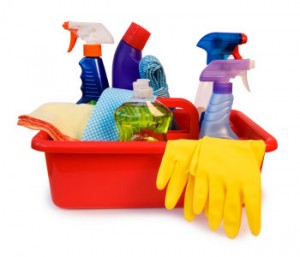Deposits can be a topic of disagreement between tenants and landlords. It’s always the ideal to have 100% of the deposit returned to the tenant at the end of a lease.
So how would a tenant go about making sure they get a full deposit returned? There are a few common issues that landlords and letting agencies face during a move out.
Tip 1: Leave it as you found it
When leaving the property, it is important that the tenant leaves everything as they found it. Any broken/damaged items (plates, glasses etc.) must be replaced and any other minor damages should be fixed. Any other maintenance issues should be discussed with your Property Manager. Ensure that all furniture is returned to its original location, all light bulbs are working and that you have checked both in and under all furniture for stray possessions. To cover all bases, the tenant should refer to the move-in inventory, ensuring everything listed on it is still there or replaced. All personal belongings must be removed.
Tip 2: Cleaning
 The majority of deductions from tenant’s deposit is for cleaning and could very easily be avoided. Here are some tips to help you ensure you avoid any excess cleaning charges:
The majority of deductions from tenant’s deposit is for cleaning and could very easily be avoided. Here are some tips to help you ensure you avoid any excess cleaning charges:
- Floor Coverings
Thoroughly vacuum all carpets. Shampoo if soiled or stained, taking great care if attempting spot removal. If in doubt, get the professionals in. Brush and mop all hard floor surfaces (scrubbing if necessary to remove scuffs on suitable surfaces).
- Walls & Painted/Varnished Surfaces
If possible remove any marks with mild detergent. Remove any hooks you have added and fill in holes – any damaged areas must be made good. Wash down all woodwork including doors and skirting boards.
- Windows
Ensure all windowpanes are clean (interior and exterior). Wash net curtains/dust blinds. Dry clean curtains if they are marked / if you are a smoker.
- Kitchen and Utility
Thoroughly clean all cooking appliances (interior and exterior), including hood and extractor. Defrost and clean fridge/freezer leaving it unplugged with the door open. Clean detergent dispensers, filter and door seals in washing machine/dishwashers. Wash down tiled surfaces/worktops/cupboards/drawers (interior and exterior). Clean and polish taps. Clean all tableware and cooking implements, even if unused during the tenancy. Remove all food items.
- Bathrooms and Bedrooms
Clean and polish bathroom and shower suite (not forgetting to clean behind and under where accessible, and to dust the extractor fan). Clean shower screen/curtain/door panels. Wash down tiled surfaces and grout, bleaching to get as clean as possible if applicable.
Wash down vanity units and cabinets inside and out. Vacuum/dust the interiors of drawers, wardrobes and cupboards. Polish mirrors and reflective surfaces. Launder all linen, press and remake beds.
- Other Areas
Dust/wipe all radiators and heaters. Dust/wipe down all furniture, electronics and ornaments. Vacuum all soft furnishings and upholstery. Ensure that there is a fresh hoover bag inside the vacuum cleaner. Tidy any private garden/patio/window boxes. Remove all self-adhesive hooks, tape, Blue Tak and adhesive panels – any damaged areas must be made good.
- If you have smoked or had a pet in the property,
All carpets, curtains and upholstery must be professionally cleaned to remove any smells, stains, or animal hair.
Tip 3: Utilities
This is for long term properties where the utilities are in the tenant’s name. Once you have the property in good order, it is time to close the utilities. Contact your suppliers and provide them with the meter readings and a forwarding address. Fill out any move out information that your letting agent has asked you to fill in as this will avoid any delays. You must also inform the council that you are moving and provide them with your new address and settle any outstanding council tax bills.
If you are in any doubt or have any questions always ask your agent. Following the above guidelines should help you get your deposit back in full.
